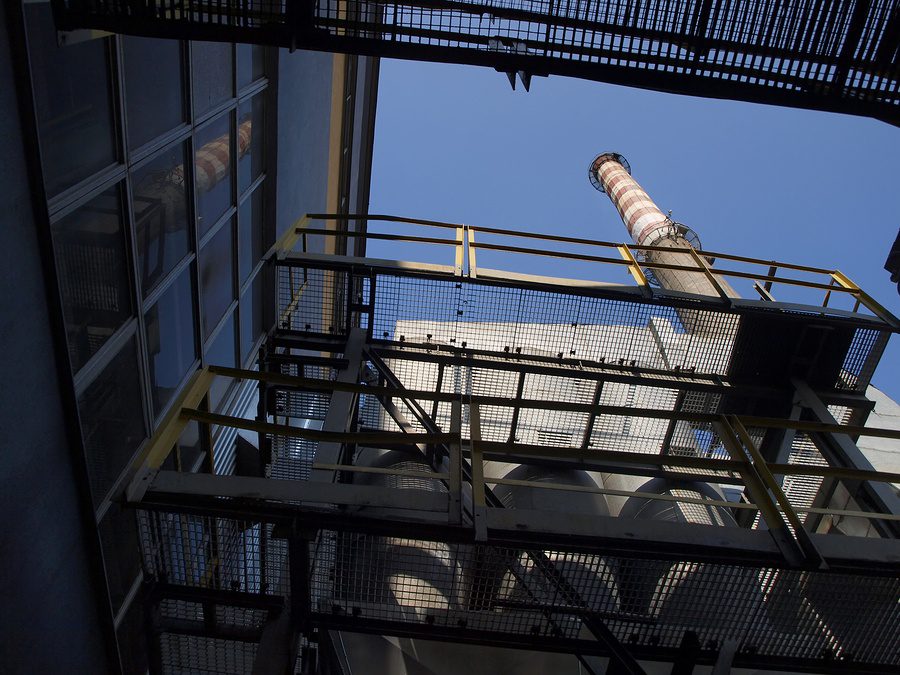5 Dust Control Fabrication Solutions

Regulatory bodies such as the OSHA and NFPA do not require industrial employers to use a particular type of dust control solution. They do, however, require companies to choose solutions that meet certain standards for air quality and combustion. Every facility must consider dust collection and control systems to ensure compliance, safety, and worker productivity. The right system is often a blend of solutions customized to meet your company’s needs.
The Importance of Contaminant Control
Industrial “dust” often includes more than wood shavings and dirt. Companies in various industries may create chemical byproducts and highly combustible metal shavings. These numerous contaminants not only pollute the worksite, but they can also travel to public spaces, neighborhoods, and other businesses. They can seep into the ground and cause health problems or permanently damage employees’ lungs.
Businesses may face workers’ compensation claims, public lawsuits, and regulatory fines if they do not invest in some sort of dust collection and control system. As part of a general risk management strategy, dust and airborne contaminant control:
- Reduces the risk of fire. A system will contain combustible dust particles and render them inert to avoid the risk of a fire or explosion.
- Improves safety. Employees and surrounding residents can breathe easy in areas surrounding well-managed industrial settings. Businesses can avoid costly consequences.
- Protects the environment. Airborne contaminants can seep into the ground and groundwater, harm the environment, and create dangerous health risks. Airborne contaminant control decreases the risks associated with environmental exposure.
- Meets compliance standards. The OSHA and NFPA require companies to take certain actions. Failure to comply can result in fines and more serious repercussions. Worksite maintenance policies often include regulatory compliance standards as well as company-specific practices. Company policies may outline filter changing practices, air quality measurement standards, and how employees can act if they notice a problem with air quality.
Airborne contaminant control systems offer benefits beyond risk management. They can maintain or improve employee health and lead to more consistent productivity levels.
5 Common Industrial Dust Collection and Control Systems
Consider some of the most common solutions with the importance of dust collection and control systems in mind:
- Inertial separators. This form of dust collection uses air moving in different directions to push dust and debris out of the airstream and into a pocket. The rapid change in direction allows the air to move through the system, but the inertia of the debris causes it to fall out of the air stream.
- Electrostatic precipitators. Those familiar with the system commonly refer to electrostatic precipitators as scrubbers. They manipulate electrons to pull small particles from the air and trap them in a collection system. The system works similarly to the way hair reacts after someone rubs a balloon on it. Hair, in this situation, acts like the contaminant and sticks out toward the balloon (the scrubber).
- Fabric filters. Fabric filters use temperature resistant fabrics to trap small and large particles inside the system. These filters are also known as baghouses and enjoy an incredibly high performance rating compared to other filtration systems.
- Wet scrubbers. A wet scrubber can collect dust and gas contaminants within the system. The filter uses a liquid such as water to collect contaminants and recycle the scrubbing liquid.
- Unit collectors. A unit collector takes a more piecemeal approach to pollution control. The system uses a fabric collector or airflow collector to trap dust and debris in targeted areas.
The type of contaminant largely determines which type of dust collection and control system a business chooses. For example, industries that produce very fine particulates may benefit most from a fabric filter system. Facility decision makers must go one step beyond a needs assessment to find the right system for the job.
Custom Fabricated vs. Prefabricated Equipment
The type of filtration system, the equipment array, and budget constraints all play a role in air filtration system selection. A prefabricated system often cannot meet all of the expectations a company presents for compliance, retrofitting, a new buildout, or changing company policies. Custom fabricated solutions, on the other hand, meet capacity, compliance, and placement expectations.

The right custom fabrication company will work with facility decision makers to identify a system type and design that will meet business needs for years. Reach out to Swanton Welding for more information about custom dust control fabrication solutions.
